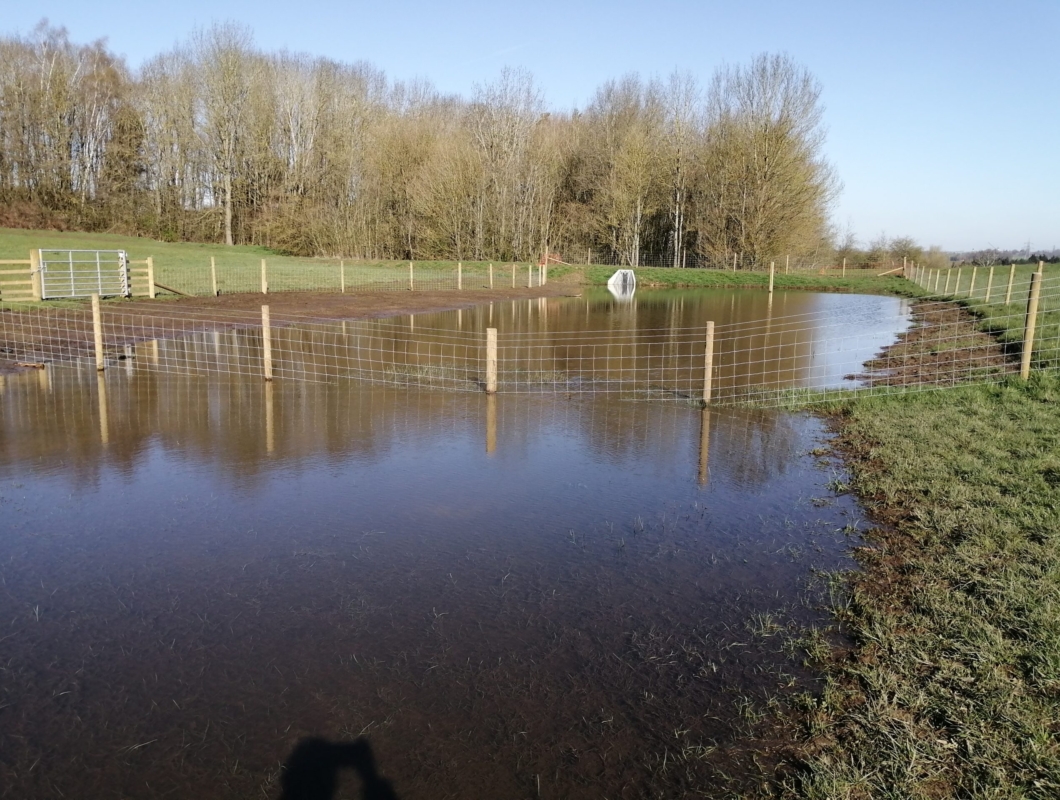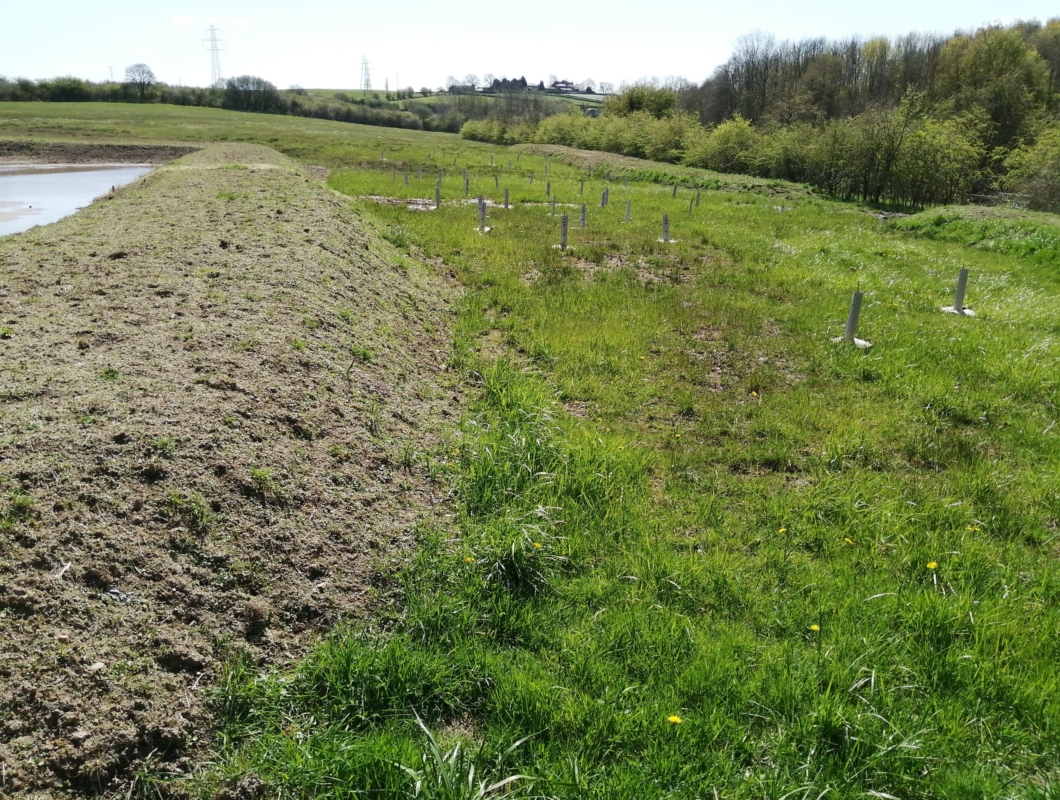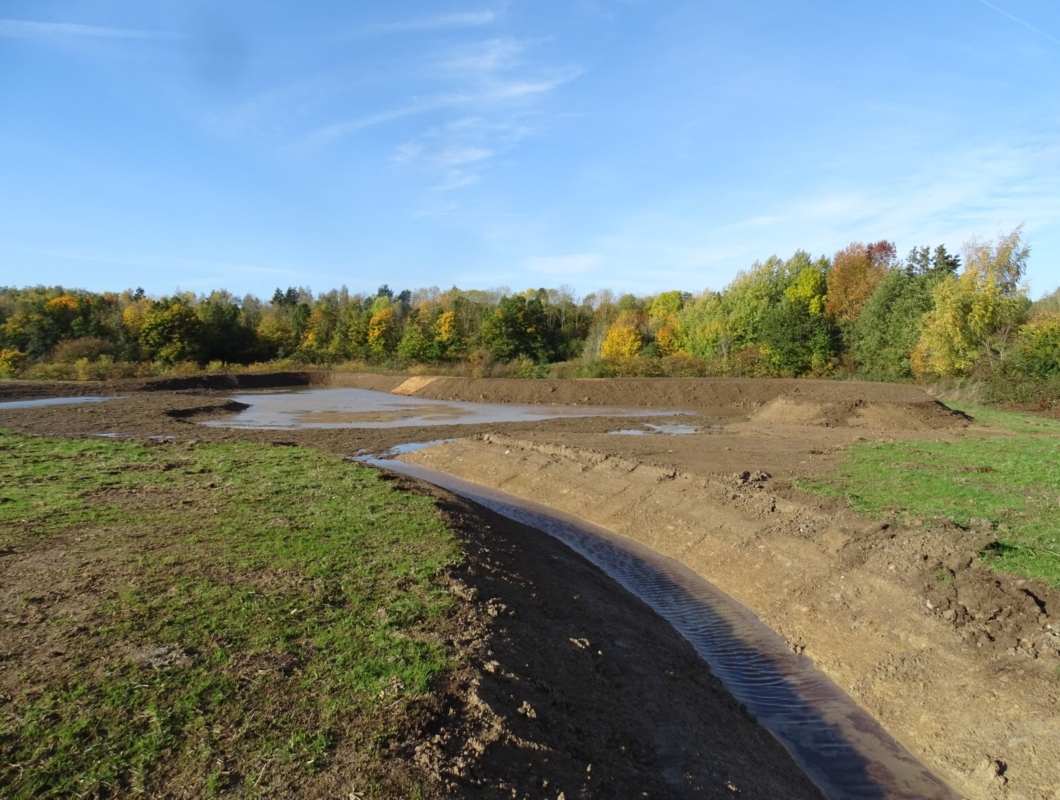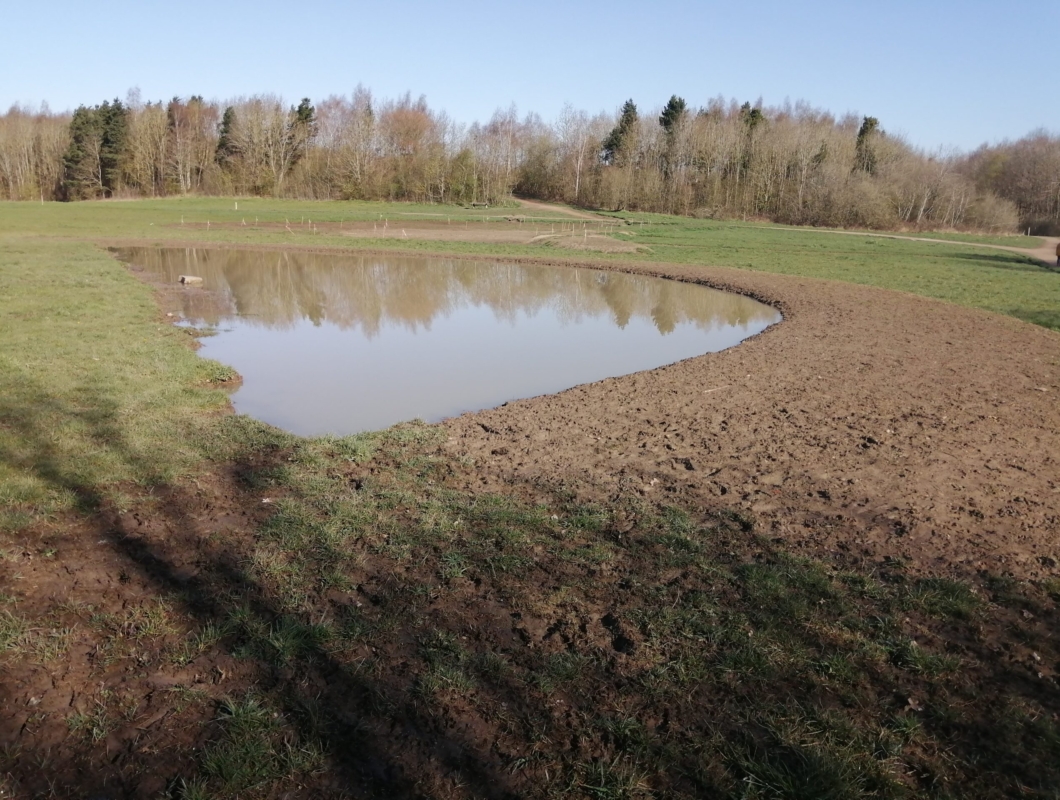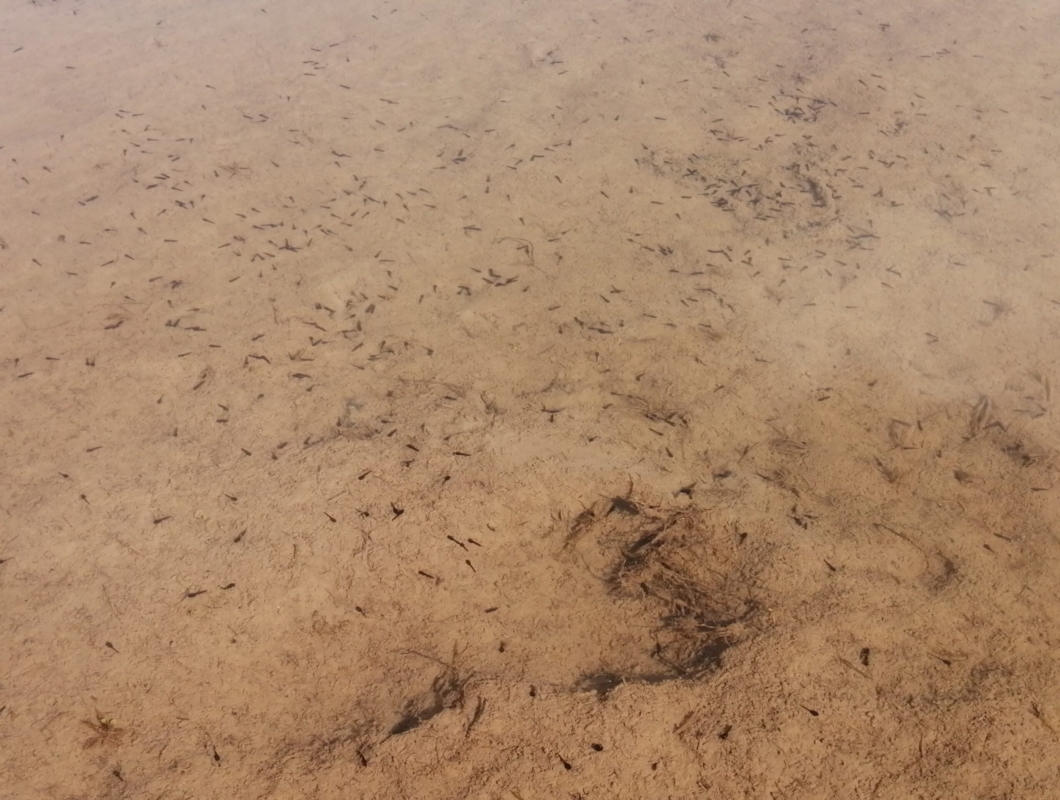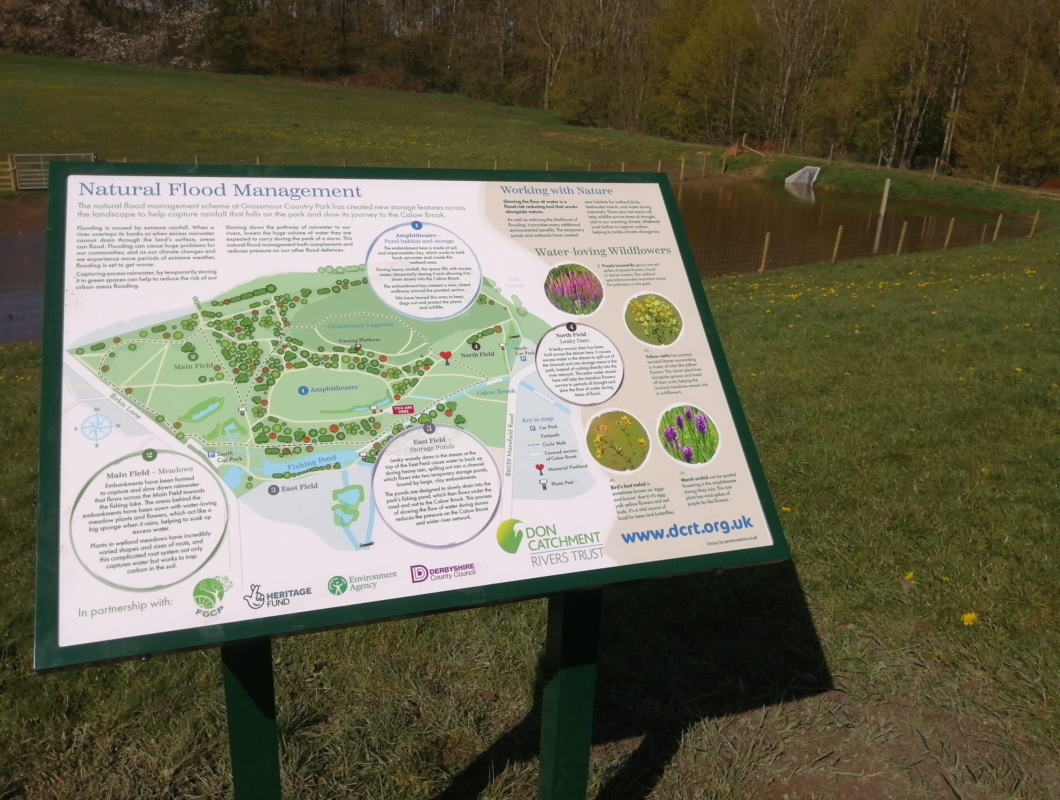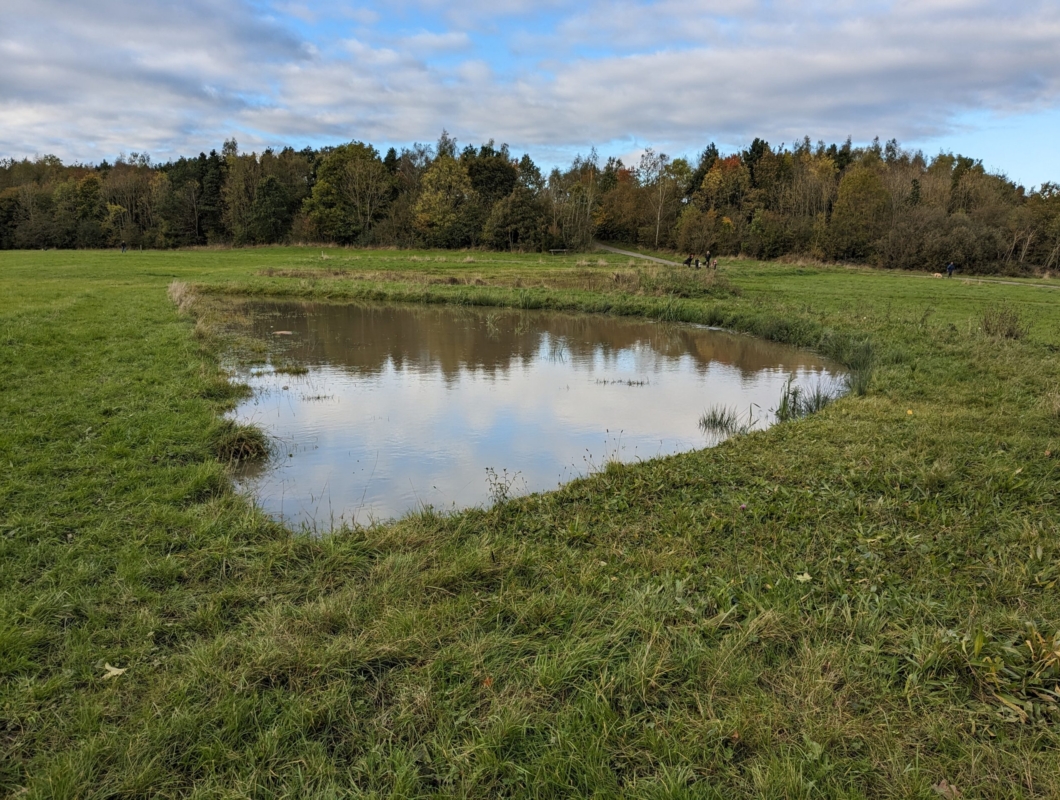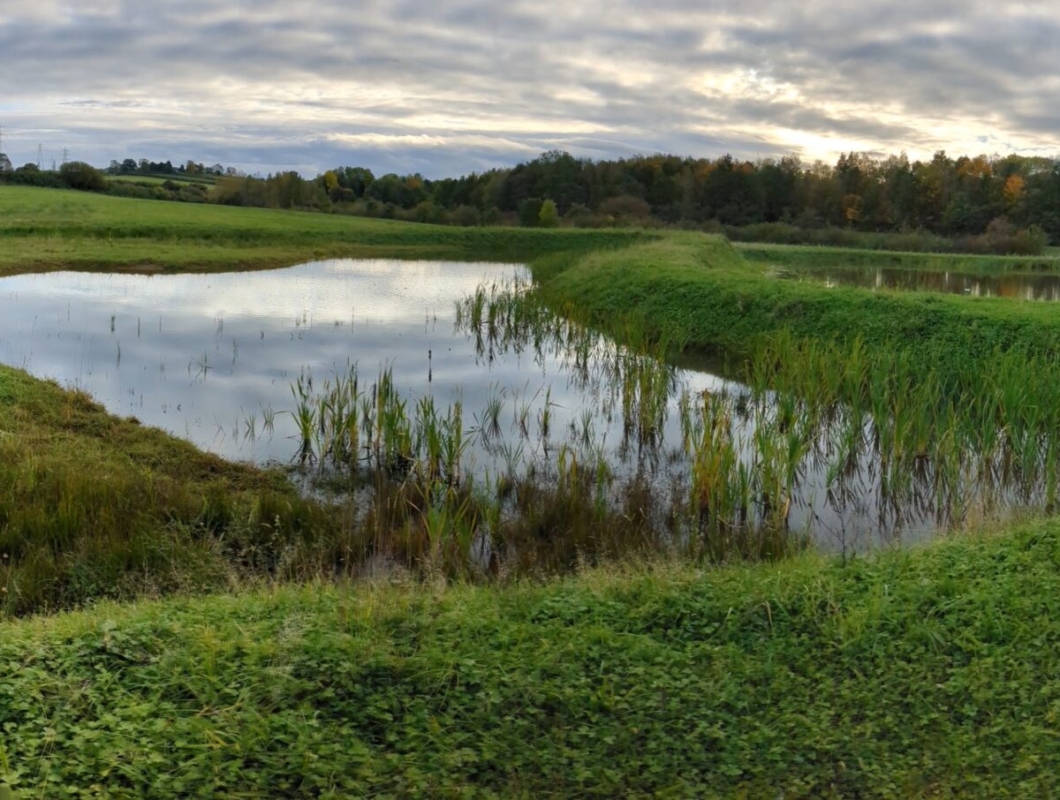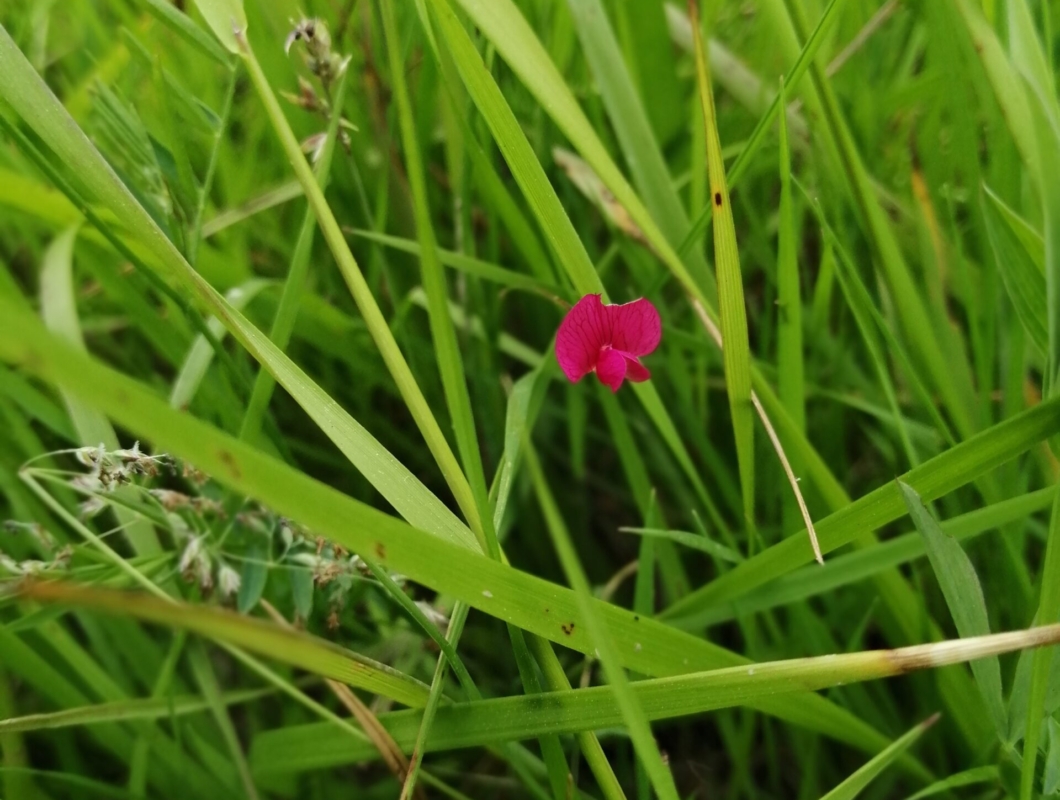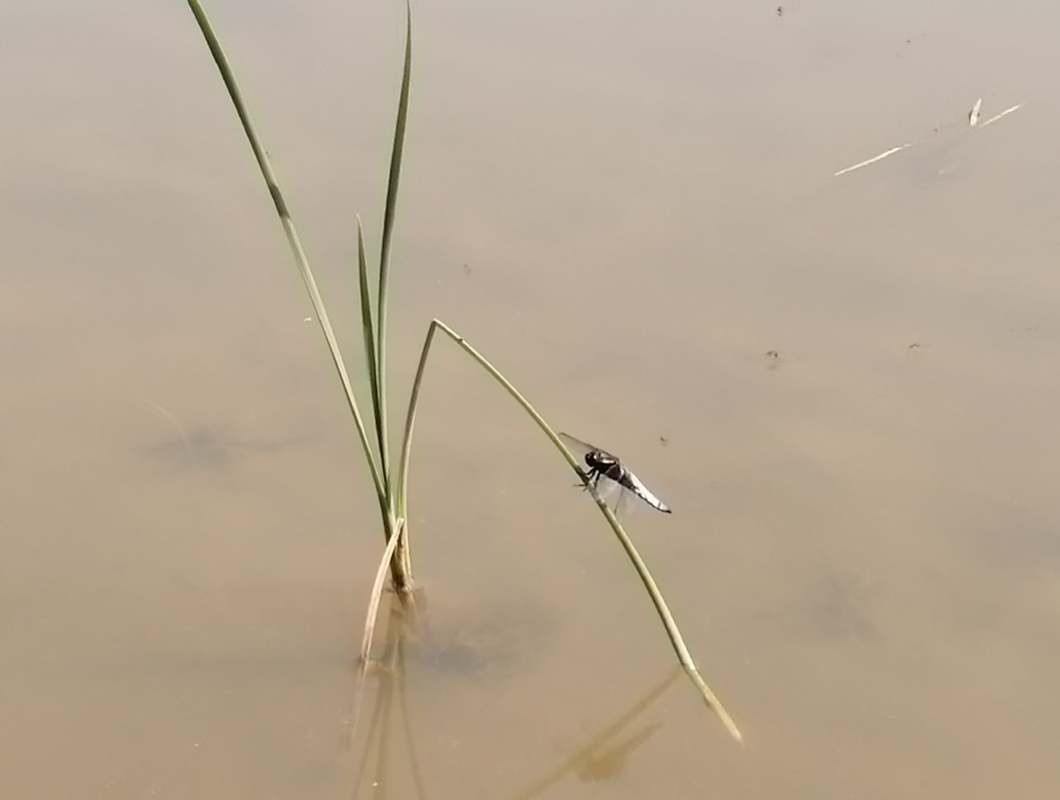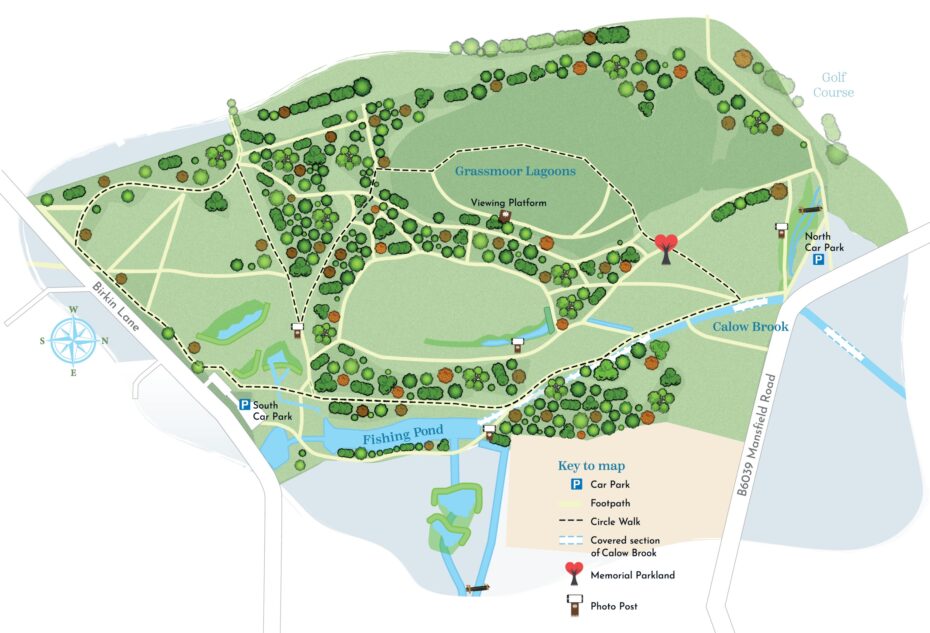Slow the Flow to the Calow at Grassmoor Country Park
Part of Hidden Heritage Secret Streams
| Budget: | £275,000 |
| Partners: | Friends of Grassmoor Country Park, National Lottery Heritage Fund, Derbyshire County Council, Environment Agency. |
| Key outcomes: | NFM, community engagement, habitat creation. |
| Local watercourse: | Calow Brook. |
Don Catchment Rivers Trust in association with the Friends of Grassmoor Country Park, developed a project at Grassmoor Country Park that aims to deliver a multi-benefit scheme to help reduce flood risk, enhance and create wildlife habitat, and improve visitor access and interest. Permission to work up the ideas into a final scheme was received from Derbyshire County Council, who were a supporting partner in the project and will take on the future management of the newly created features. The scheme has been through planning permission and the earth works were completed in November 2022. The work formed part of our National Lottery Heritage Fund project Hidden Heritage Secret Streams.
The works were delivered in two phases;
Phase 1: The Amphitheatre and North Field. This phase was funded by the National Lottery Heritage Fund and the Environment Agency.
Phase 2: The Main field and East Field. This phase was funded by the Green Recovery Challenge Fund and the Environment Agency.
The aim of the natural flood management scheme is to slow the flow of water running off areas of the park into the Calow Brook during heavy rainfall. The work in Grassmoor Country Park is part of a wider programme of activities the Don Catchment Rivers Trust is delivering in and around Chesterfield to help reduce flood risk. Watch a talk by our Natural Flood Management Officer here to find out more about the wider programme and how we work with nature to slow flood flows.
Slow the Flow to the Calow has involved re-landscaping areas of the park into features such as scrapes (shallow temporary ponds), earth embankments and ponds, to make the most of the topography of the site and its ability to temporarily hold back water so that it drains away into the brook at a slower rate than it was doing before the works took place. Some of the newly created features will be dry most of the year and only fill up during heavy rainfall, draining again over a few days or so while others will stay wetter for longer creating more permanent wetland habitat.
Soils were kept and replaced to allow the meadows to grow back and have also been sown with more seed that will introduce a greater variety of plants into the meadows thanks to a great effort of local volunteers. The vegetation will take a little while to fully establish but has already started to make a come back and the new features are blending back in to the landscape of the park. The ponds have seen an explosion of wildlife and rainfall / runoff storage capacity in the park is now over 1,500 m3 (that’s 1,500,000 litres or 2,600,000 pints!).
Have a look at our photos below to see progress so far and drone footage!
How you can get involved
Photography monitoring
We have set up 4 posts in the park where we are asking people to take photos during their visits throughout the year and in different weather conditions (especially when wet!) so that we can monitor how the new features function and the changes they bring to the landscape over the next few years. The post locations can be found on the Photo Locations map below. Phones/cameras are placed on top of the posts pointing in the directions indicated by black arrows (in some locations there will be more than one direction for multiple view points) and photos can then be sent to us at [email protected].
Vegetation seeding and monitoring
Reseeding of the new features within the park’s meadows took place in autumn 2022 and spring 2023 to help maintain and improve the diversity of plant species found here.
We have been carrying out vegetation surveys in the park with the help of volunteers so that we can monitor changes as a result of the project. These take place in the summer and all training is provided. If you’d be keen to get involved with future surveys, do get in touch!
If you’d like any further information on the project or to get involved, please contact us at [email protected].


